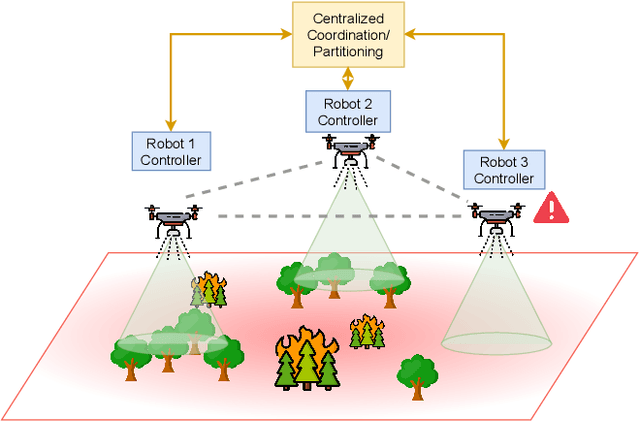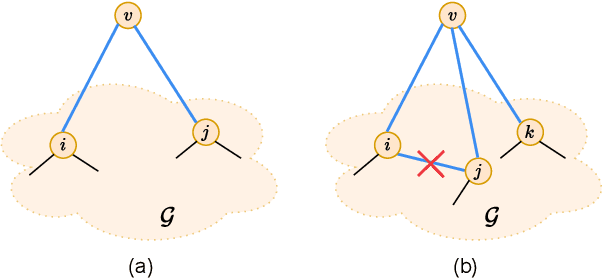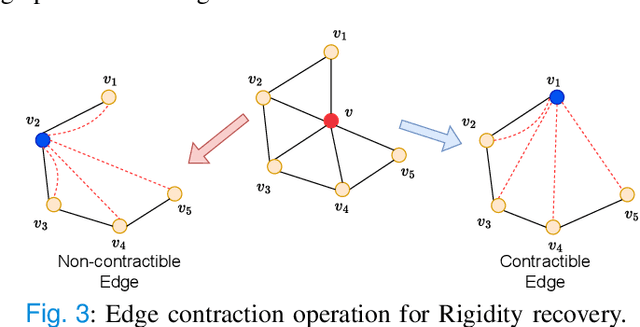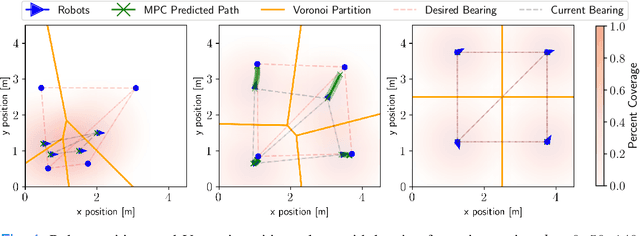Minhyun Cho
On Enhancing Structural Resilience of Multirobot Coverage Control with Bearing Rigidity
Feb 23, 2025



Abstract:The problem of multi-robot coverage control has been widely studied to efficiently coordinate a team of robots to cover a desired area of interest. However, this problem faces significant challenges when some robots are lost or deviate from their desired formation during the mission due to faults or cyberattacks. Since a majority of multi-robot systems (MRSs) rely on communication and relative sensing for their efficient operation, a failure in one robot could result in a cascade of failures in the entire system. In this work, we propose a hierarchical framework for area coverage, combining centralized coordination by leveraging Voronoi partitioning with decentralized reference tracking model predictive control (MPC) for control design. In addition to reference tracking, the decentralized MPC also performs bearing maintenance to enforce a rigid MRS network, thereby enhancing the structural resilience, i.e., the ability to detect and mitigate the effects of localization errors and robot loss during the mission. Furthermore, we show that the resulting control architecture guarantees the recovery of the MRS network in the event of robot loss while maintaining a minimally rigid structure. The effectiveness of the proposed algorithm is validated through numerical simulations.
Range-based Multi-Robot Integrity Monitoring Against Cyberattacks and Faults: An Anchor-Free Approach
Aug 20, 2024Abstract:Coordination of multi-robot systems (MRSs) relies on efficient sensing and reliable communication among the robots. However, the sensors and communication channels of these robots are often vulnerable to cyberattacks and faults, which can disrupt their individual behavior and the overall objective of the MRS. In this work, we present a multi-robot integrity monitoring framework that utilizes inter-robot range measurements to (i) detect the presence of cyberattacks or faults affecting the MRS, (ii) identify the affected robot(s), and (iii) reconstruct the resulting localization error of these robot(s). The proposed iterative algorithm leverages sequential convex programming and alternating direction of multipliers method to enable real-time and distributed implementation. Our approach is validated using numerical simulations and demonstrated using PX4-SiTL in Gazebo on an MRS, where certain agents deviate from their desired position due to a GNSS spoofing attack. Furthermore, we demonstrate the scalability and interoperability of our algorithm through mixed-reality experiments by forming a heterogeneous MRS comprising real Crazyflie UAVs and virtual PX4-SiTL UAVs working in tandem.
 Add to Chrome
Add to Chrome Add to Firefox
Add to Firefox Add to Edge
Add to Edge